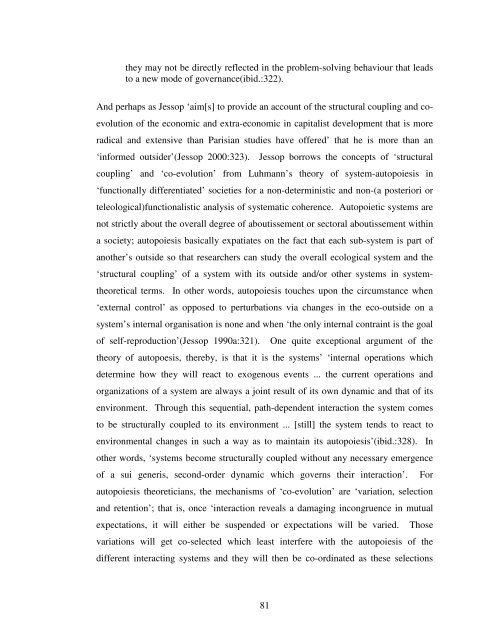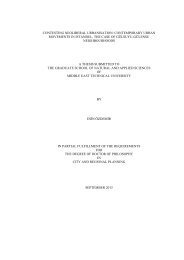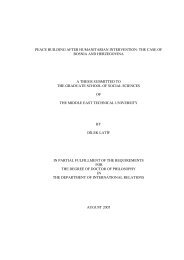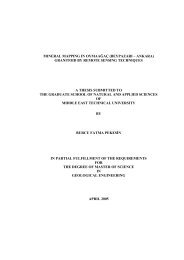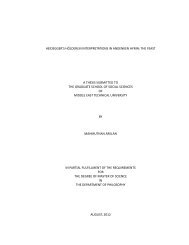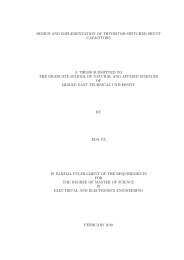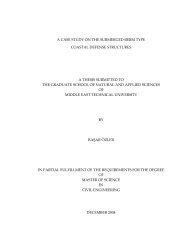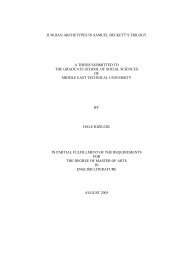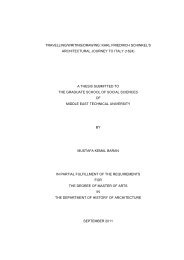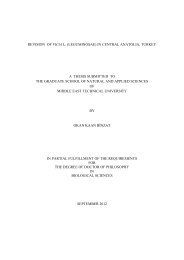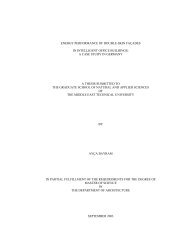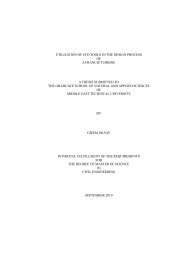View Original - Middle East Technical University
View Original - Middle East Technical University
View Original - Middle East Technical University
You also want an ePaper? Increase the reach of your titles
YUMPU automatically turns print PDFs into web optimized ePapers that Google loves.
they may not be directly reflected in the problem-solving behaviour that leads<br />
to a new mode of governance(ibid.:322).<br />
And perhaps as Jessop ‘aim[s] to provide an account of the structural coupling and co-<br />
evolution of the economic and extra-economic in capitalist development that is more<br />
radical and extensive than Parisian studies have offered’ that he is more than an<br />
‘informed outsider’(Jessop 2000:323). Jessop borrows the concepts of ‘structural<br />
coupling’ and ‘co-evolution’ from Luhmann’s theory of system-autopoiesis in<br />
‘functionally differentiated’ societies for a non-deterministic and non-(a posteriori or<br />
teleological)functionalistic analysis of systematic coherence. Autopoietic systems are<br />
not strictly about the overall degree of aboutissement or sectoral aboutissement within<br />
a society; autopoiesis basically expatiates on the fact that each sub-system is part of<br />
another’s outside so that researchers can study the overall ecological system and the<br />
‘structural coupling’ of a system with its outside and/or other systems in system-<br />
theoretical terms. In other words, autopoiesis touches upon the circumstance when<br />
‘external control’ as opposed to perturbations via changes in the eco-outside on a<br />
system’s internal organisation is none and when ‘the only internal contraint is the goal<br />
of self-reproduction’(Jessop 1990a:321). One quite exceptional argument of the<br />
theory of autopoesis, thereby, is that it is the systems’ ‘internal operations which<br />
determine how they will react to exogenous events ... the current operations and<br />
organizations of a system are always a joint result of its own dynamic and that of its<br />
environment. Through this sequential, path-dependent interaction the system comes<br />
to be structurally coupled to its environment ... [still] the system tends to react to<br />
environmental changes in such a way as to maintain its autopoiesis’(ibid.:328). In<br />
other words, ‘systems become structurally coupled without any necessary emergence<br />
of a sui generis, second-order dynamic which governs their interaction’. For<br />
autopoiesis theoreticians, the mechanisms of ‘co-evolution’ are ‘variation, selection<br />
and retention’; that is, once ‘interaction reveals a damaging incongruence in mutual<br />
expectations, it will either be suspended or expectations will be varied. Those<br />
variations will get co-selected which least interfere with the autopoiesis of the<br />
different interacting systems and they will then be co-ordinated as these selections<br />
81


